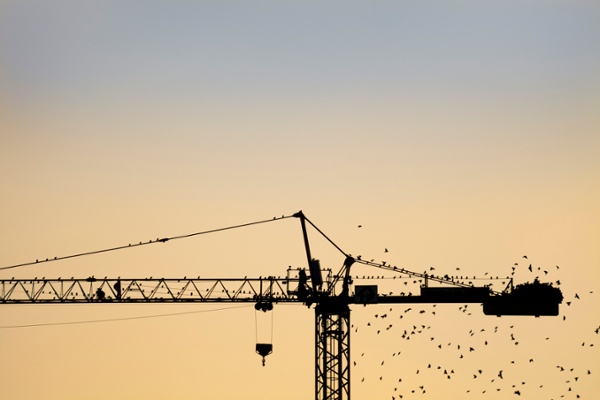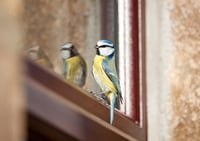
If there's one thing birds love during nesting season, it's construction sites. These spaces are accessible, secluded, and have many nooks and crevices where they can stay relatively dry while raising their young. Unfortunately, the presence of nesting birds on your site will present catastrophic challenges for the project. It can even bring everything to a complete halt. After all, bird-proofing construction sites generally must take place before the birds create nests, not afterward, because of current laws.
Both federal and state laws explicitly protect bird nests. That means your options become extremely limited if even one bird has chosen your construction site as its new home, let alone a colony with dozens of birds. There's a high risk that your entire operation will have to stop until the birds abandon the nest when they migrate several months later. Along with creating massive delays, these unwanted tenants will also cause expensive damage and expose your team to health hazards.
Legislators designed bird nest legislation to protect native and migratory birds throughout the country. Many bird populations have been in decline and truly need all the help they can get. We know your business doesn't want to break the law, and you also don't want to cause birds any harm. That's why bird-proofing construction sites before nesting season begins is your best bet for preventing this complex problem in the first place.
Why Birds Rule the Roost During Nesting Season
The Federal Migratory Bird Act forbids anyone from interfering with an "active" nest, which means a nest that's occupied by eggs, brooding parents, or baby birds. In most cases, once a bird family has ended up on your construction site, you would just have to carefully work around them. Moving or destroying a nest will lead to some pretty substantial fines (up to $15,000). You also can't prevent bird parents from returning to their nest.
In the case of certain endangered bird species, many legal provisions state that you're not allowed to "disturb" the birds while they're near or inside their nests. This would paralyze most construction activity in the vicinity. The only exception to these regulations would be if you manage to secure a permit from the US Fish & Wildlife Service allowing removal of the nests. But it grants these permits only in situations where the birds present a safety hazard. The permit application process is also very slow and time-consuming, so you're still going to be facing some significant project delays.
The risk of nesting birds having an impact on your construction project is higher if you're building in a rural or suburban location. However, nesting bird infestations are an extremely common issue everywhere but in the busiest urban centers. This is why bird-proofing construction sites is such a valuable mitigation strategy for businesses throughout the country.
The nesting season will usually run from March to late July. But it can also begin earlier and end later for certain species of birds. The nightmare scenario with a nesting bird infestation on your property is having to delay your project for several months during one of the most productive times of the year. This will almost always have severe financial consequences.
How Birds (and Bird Poop) Cause Expensive Damage
While construction sites are very attractive to birds, they definitely don't belong there. Bird poop is very high in uric acid and extremely corrosive for just about any surface. Droppings can cause permanent damage to stone, metals, or wood. They can even eat away at many types of roofing materials.
The presence of birds on a construction site will also come with a lot of potentially disastrous consequences. They're notorious for blocking chimneys and ventilation systems with their feathers and nesting materials, which is downright dangerous. Nesting birds also create these kinds of obstructions inside gutters and drainage pipes, leading to floods and water damage. Bird-proofing construction sites is all about keeping birds out of where they shouldn't be. This is the most sensible and humane way to avoid all of these expenses.
The Health Risks of Flying Pests
We wouldn't normally think of birds as a type of pest. However, they do spread pathogens that can make humans extremely sick, just like rats. Wild birds carry parasites, bird mites, fleas, and other transmitters of serious viral and bacterial diseases. Professionals that interact with bird's nests actually wear full-on protective gear, including gloves and a dust mask.
Dry bird feces become especially dangerous because people can easily inhale the airborne dust particles. Dried bird droppings that end up in air ducts or vents can contaminate the air all around a building. They can also seriously affect the health of any team members working at the site.
In general, having a family of wild birds living on your property is really no different, and no safer, than having a family of rats roaming around. Bird-proofing construction sites can prevent these potentially hazardous conditions, which makes it a very valuable safety measure. By encouraging birds to find a home elsewhere, you're also proactively looking out for the health of your employees.
Effective Strategies for Bird-Proofing Construction Sites

There's no one-size-fits-all approach when it comes to bird-proofing your construction site. It depends on your unique needs. The key is not to wait for the nesting season to begin. By then, it might already be too late. Many species of birds will be actively looking for a dry, safe home by the beginning of March. The good news is there's a wide variety of effective bird proofing techniques that can be adapted to your own needs.
Physical barriers, also called exclusion products, are considered one of the most humane and effective ways to keep nesting birds at bay. The goal is to prevent the birds from accessing any suitable spots for their nests. For example, Bird Netting is a strong, durable, and nearly invisible mesh barrier. It can be used for a wide variety of structures or openings, making it a very popular option for construction sites. Vent Guards are another useful physical barrier since keeping nesting birds out of vents is essential for effective bird-proofing.
Bird deterrents, like devices that emit a distress call, can make your construction site less appealing for birds looking for a safe space to nest. Bird Barrier's innovative Optical Gel combines multiple elements to repel birds using sight, sound, and smell. This makes it ideal for being placed on roofs, ledges, and other areas that attract nesting birds. Physical barriers can complement bird deterrents (and vice versa) as part of a comprehensive strategy.
The best way to avoid the hazards and expenses of a bird infestation is to prevent birds from making themselves at home in the first place. That's where we can help. Bird Barrier has a wide range of innovative, humane solutions to help you remove nesting opportunities and keep your construction site free of nesting birds throughout the entire season.
About Bird Barrier
Bird Barrier is a leader in innovative technology designed to prevent birds from landing, roosting or nesting. We specialize in urban bird control to remove birds humanely and effectively. Our website, birdbarrier.com, hosts a wealth of content to help people understand and identify bird control solutions for various problems with pest birds. Please contact us if you need help with a bird related problem. You may also benefit from our free guide, Bird Deterrents: The Complete Guide.






